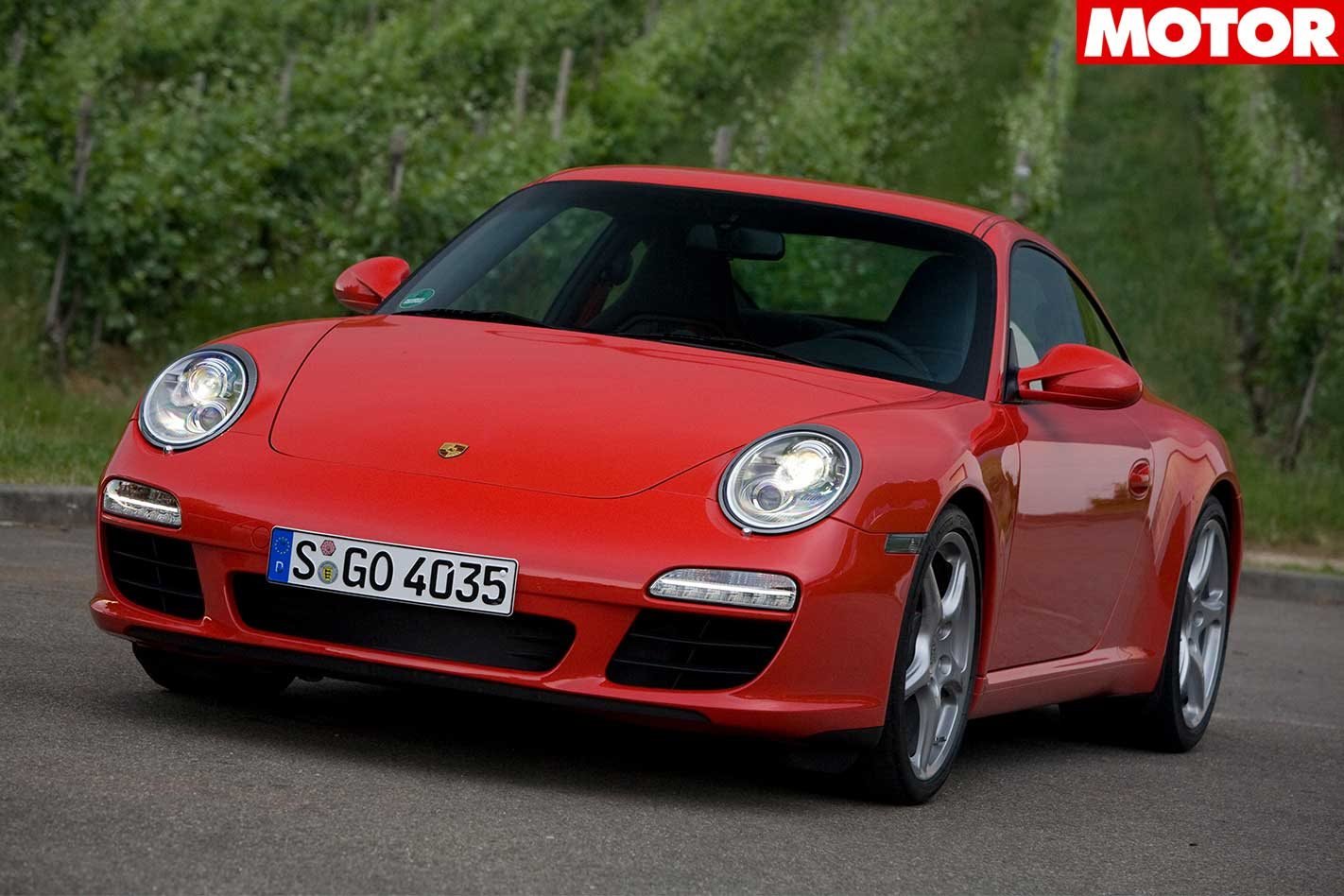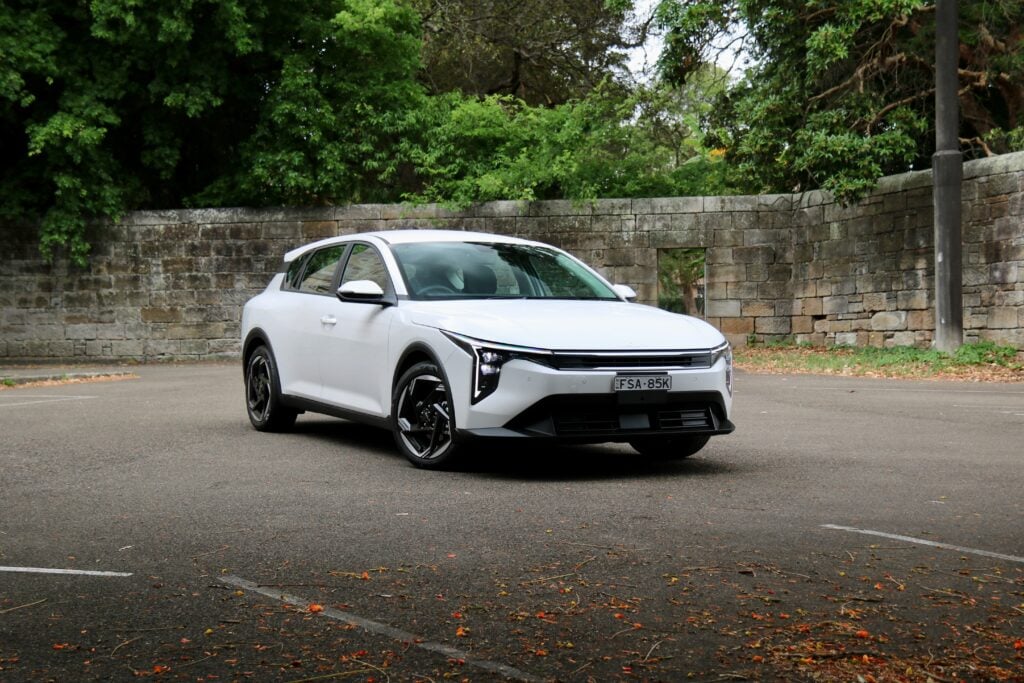Expectation’s a funny thing.
This review was first published in MOTOR magazine’s August 2008 issue.
Too much of it can only lead to utter disappointment when things don’t go according to plan — just ask anyone who allocated their share of last month’s $58 million Powerball booty to the eternal pursuit of hedonism and vehicle acquisition, only to discover that the winning ticket wasn’t even sold in their state.
But when the guarantee of something great does exist, few things can compare to the rare, but exciting sensation that comes with it. Like the news that Porsche was going to upgrade the already brilliant 997-series 911 with a double-clutch transmission, direct fuel injection and some techno taillights.
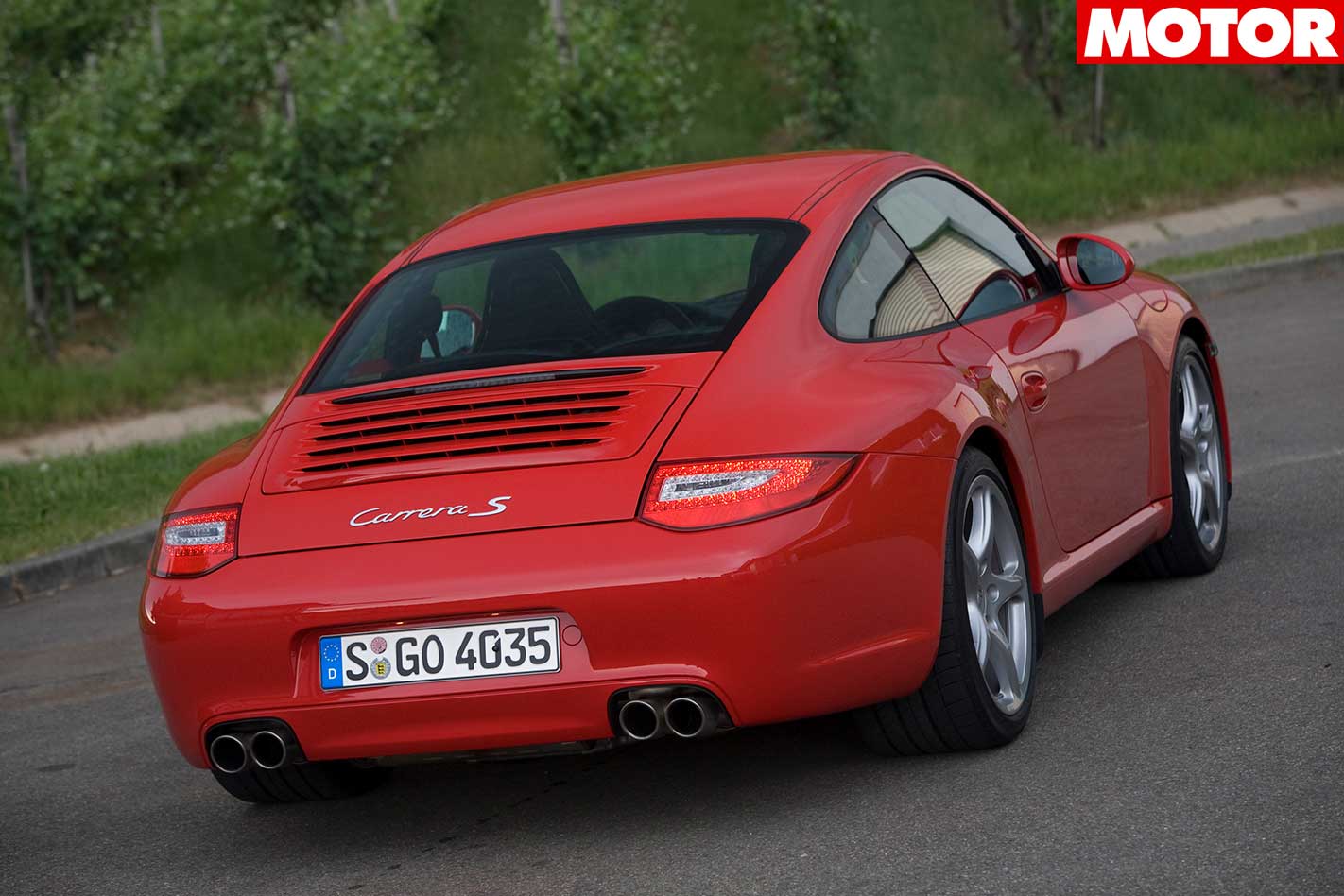
Yes, it’s faster, edgier, sexier, better-equipped and more expensive, but it’s also cleaner, greener, more efficient and, best of all, more fun. Rarely, if ever, has embracing mother nature delivered such a rush.
Both direct-injection 911 engines are all-new. Not one single component has been carried over from the existing 3.6- and 3.8-litre flat sixes that have powered the Carrera and Carrera S 911s since 2004.
Cylinder head, pistons, conrod, crankshaft, induction system, exhaust system, oil system, engine case, you name it, they’re different. Even the screws have changed (due to new legislation, apparently).
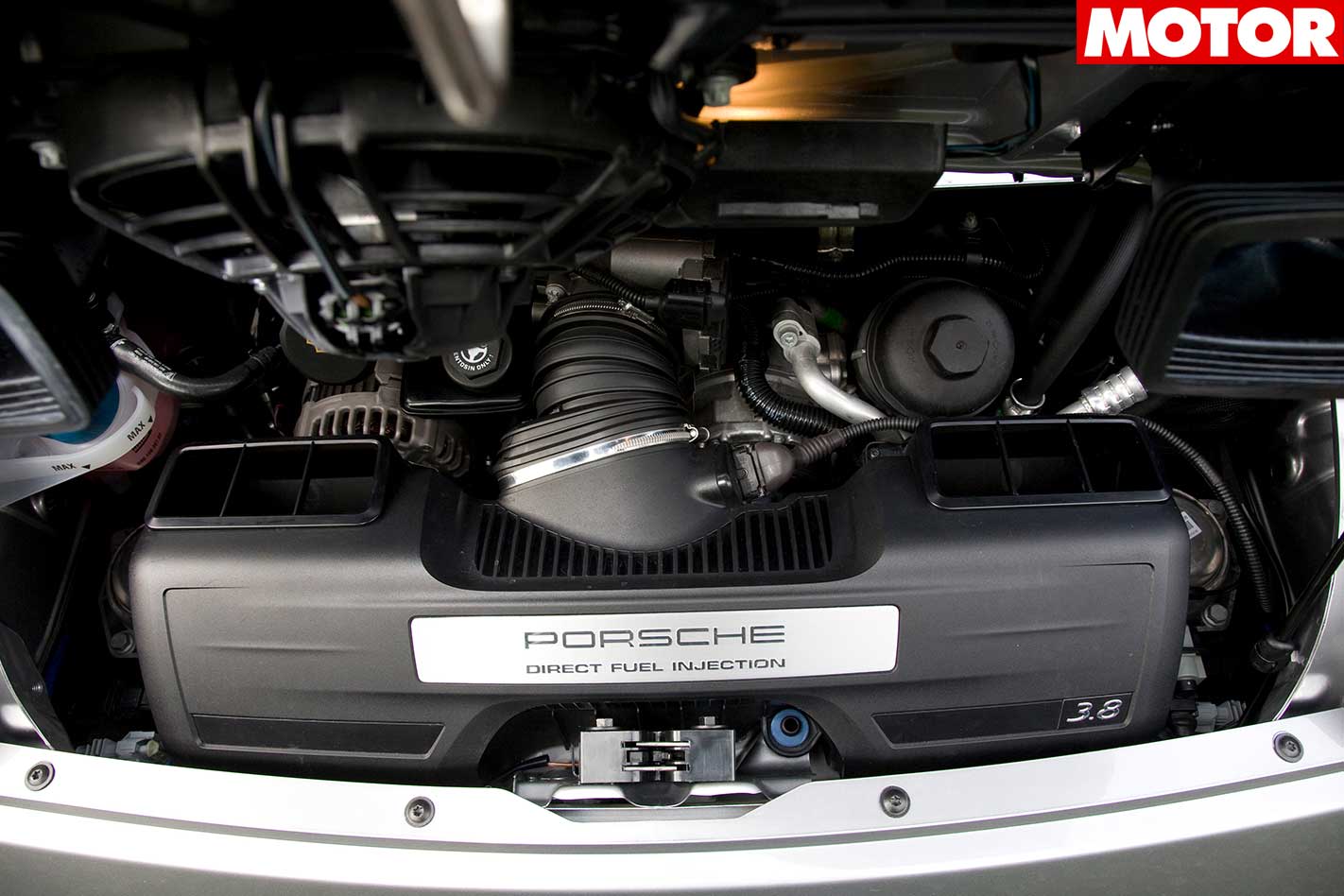
On paper, the most obvious change is to the engine’s bore and stroke configuration. Previously, both capacities shared the same 82.8mm stroke, but the 3.8 ran a 99.0mm bore — 3.0mm larger than the 3.6’s. While the direct-injection flat sixes are essentially still a 3.6 and a 3.8, the smaller engine is more oversquare than before (with a larger 97.0mm bore and shorter 81.5mm stroke for 3614cc), while the harder-edged 3.8 is dramatically more oversquare (running a 102.0mm bore and a much-shorter 77.5mm stroke for exactly 3800cc).
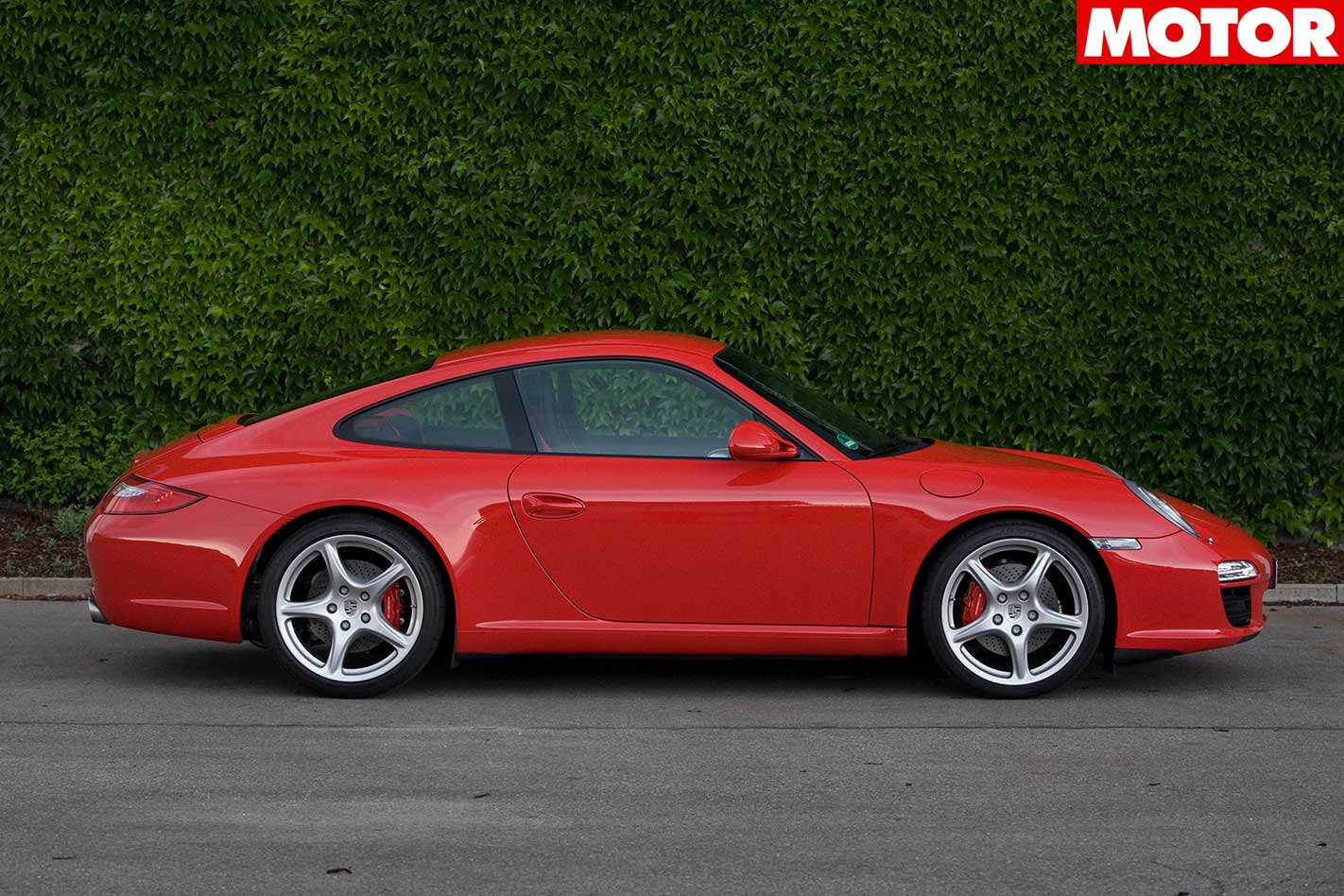
The effect of the altered bore/stroke relationship is a raised rev ceiling (up 200 revs to 7500rpm for both), aided by reducing friction with a special coating on the cup tappets and piston rings. But it’s the DFI 3.8 that feels to have the edge.
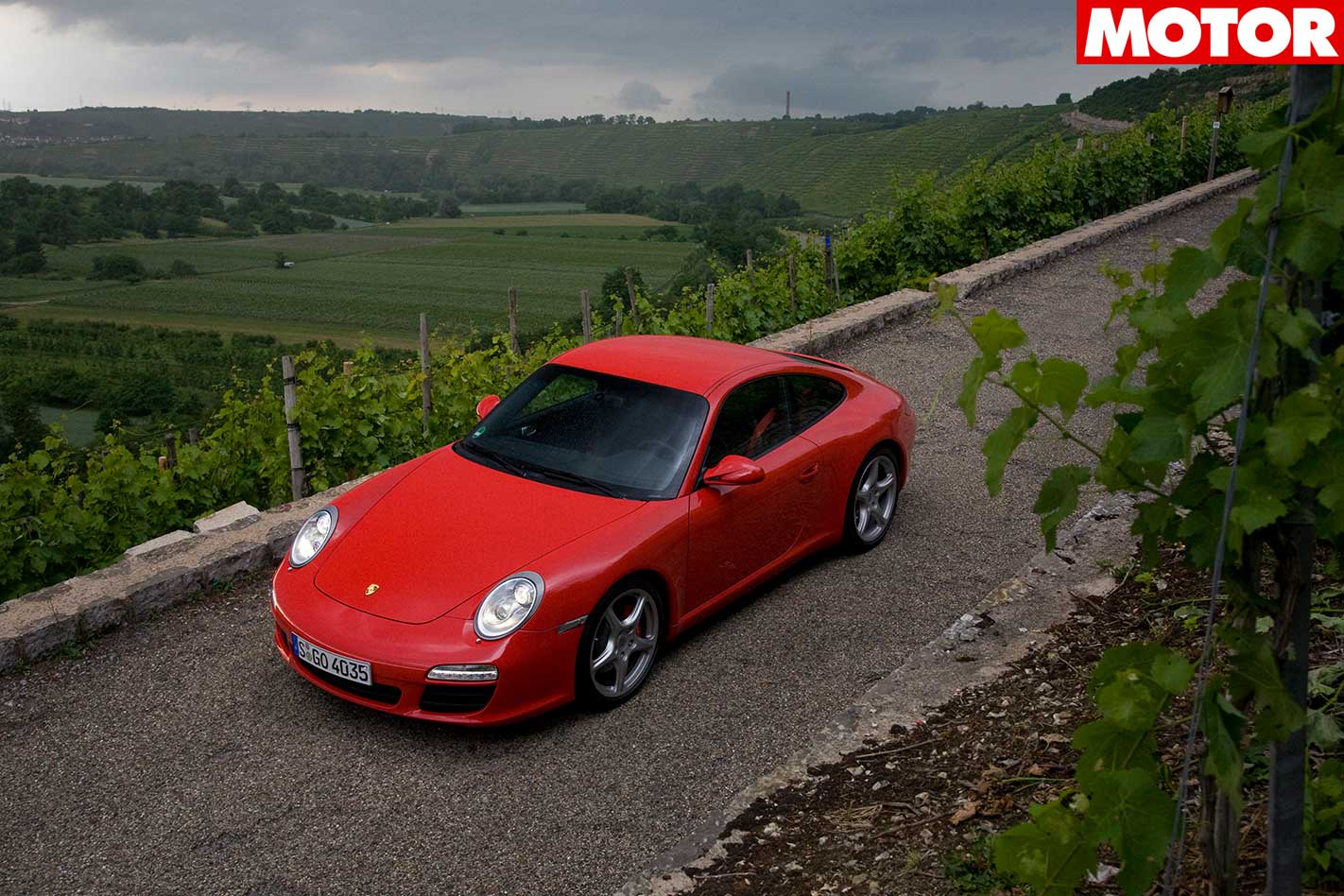
It’s hard to think of a more appropriate place to test the new 3.8’s mettle than on a blissfully unrestricted German autobahn. And that’s what lies ahead — about 35km of it.
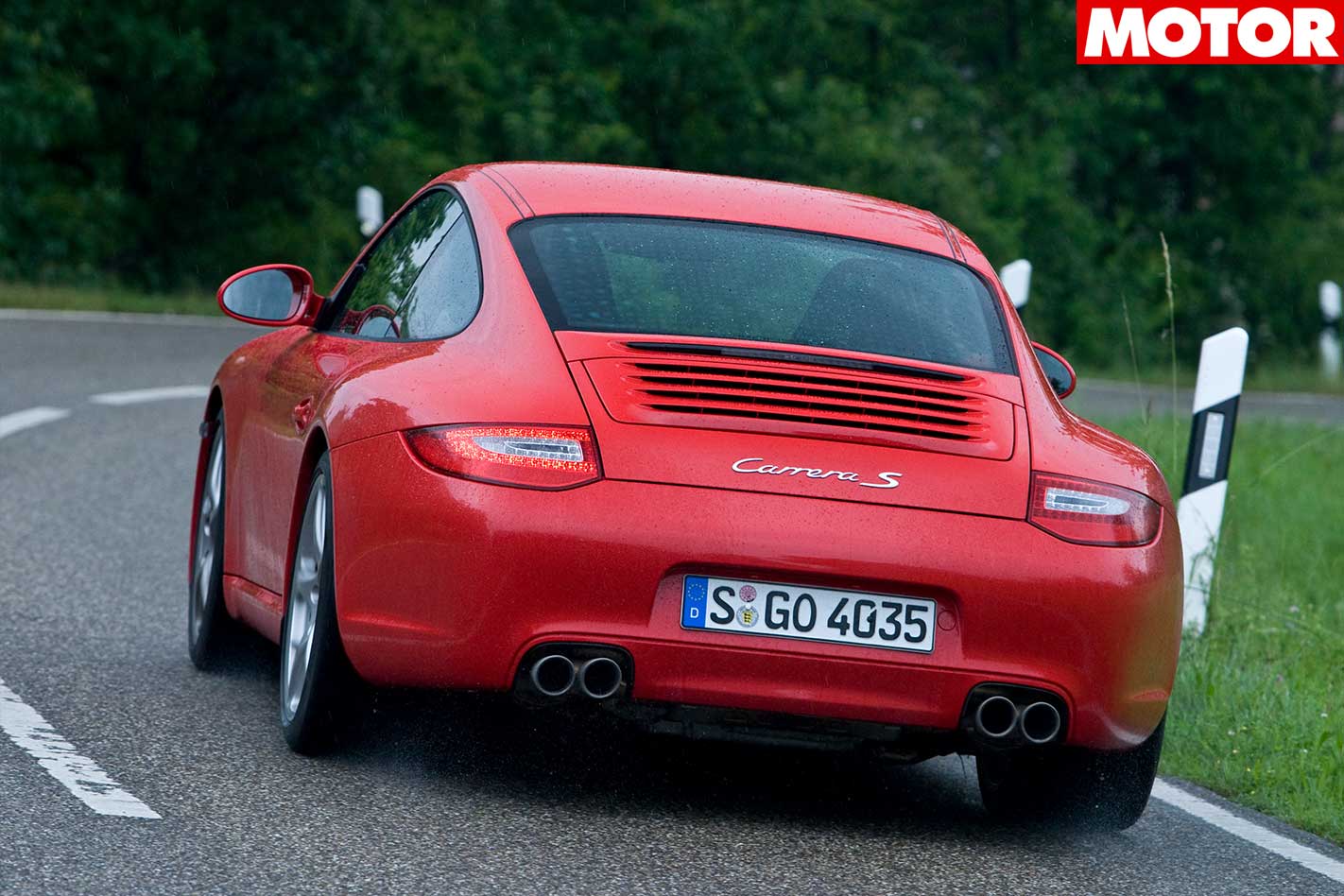
The new S absolutely relishes the challenge. I forget to check what third winds out to, but I manage to see 204 in fourth. Considering the ’08 manual coupe’s zero-to-200km/h claim is only 15.2sec, there’s hardly time to note down specs, so I grab fifth and keep the right pedal pinned. The S’s brilliant new 3.8 maintains the rage, but there’s a moment to notice the change in its character.
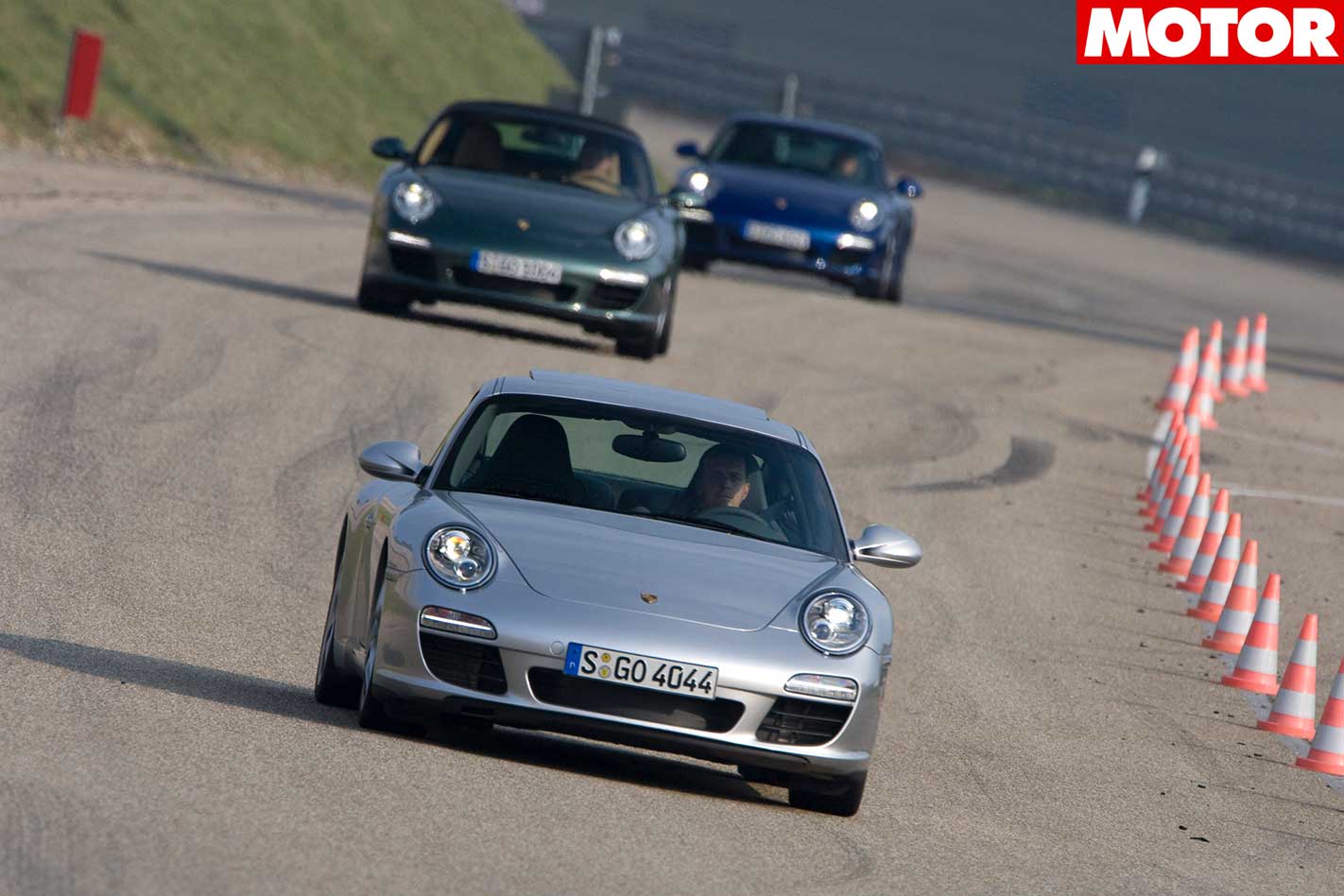
It sounds magnificent — even better than the old engine (and that’s saying something) — but above six-eight in sixth, it’s a noise than can be truly, indelibly appreciated. At full load in top gear, the centre dial’s digital speedo keeps ticking over beyond 270 and the engine’s hard-edged wail fills the Carrera S’s cabin.
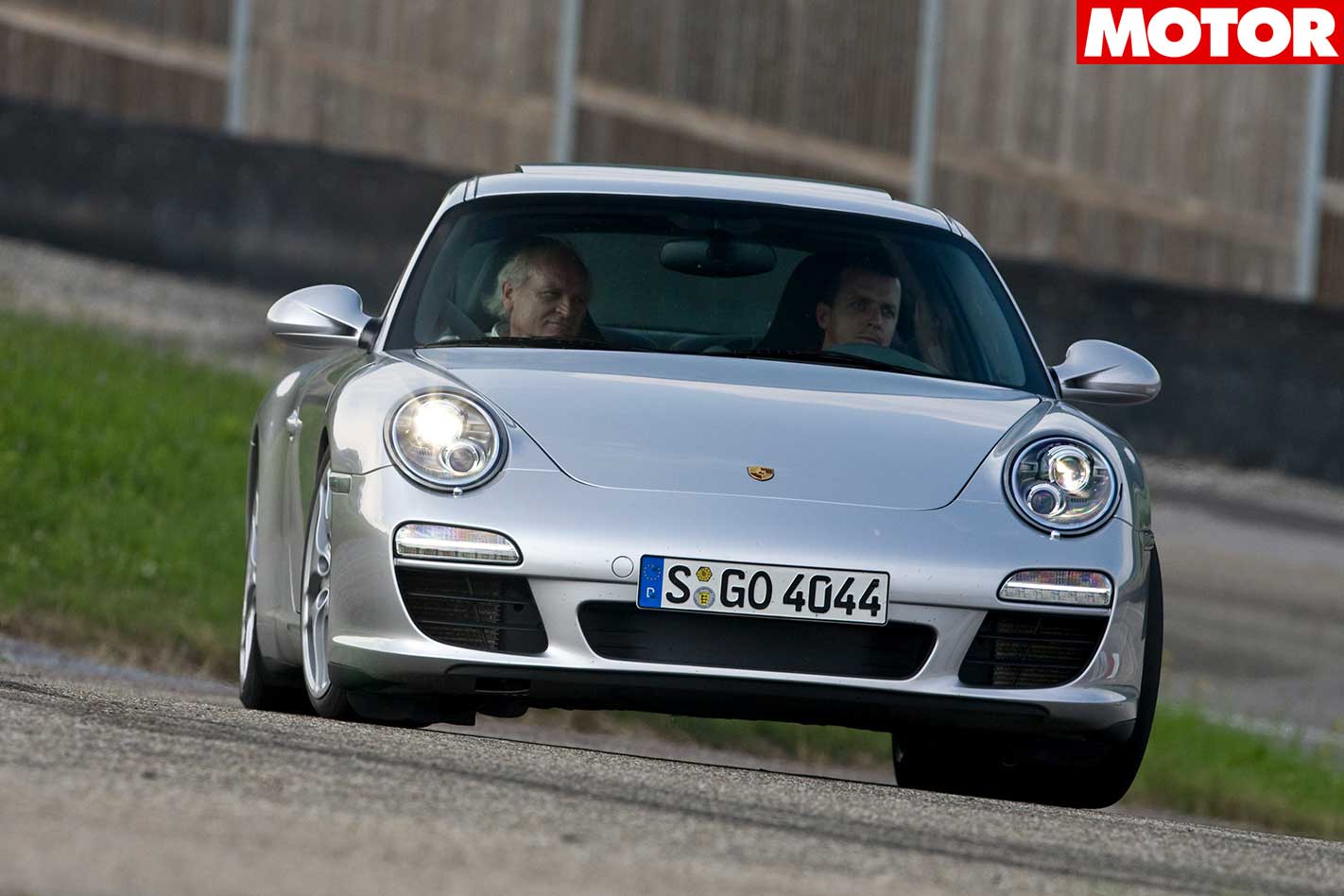
The 911 could’ve easily handled more. At close to top whack, it’s so confident, so planted, you’d think it was made for the roads skirting Stuttgart… But, contrary to popular opinion, not all German roads are billiard-table smooth.
The back roads snaking to our lunch car-swap point serve up a combination of on- and off-camber bends, up- and down-hill hairpins and one particularly scar-riddled section of road Porsche must have missed when tuning the ride of every Cayenne. And again, the new 911 performs beyond expectation.
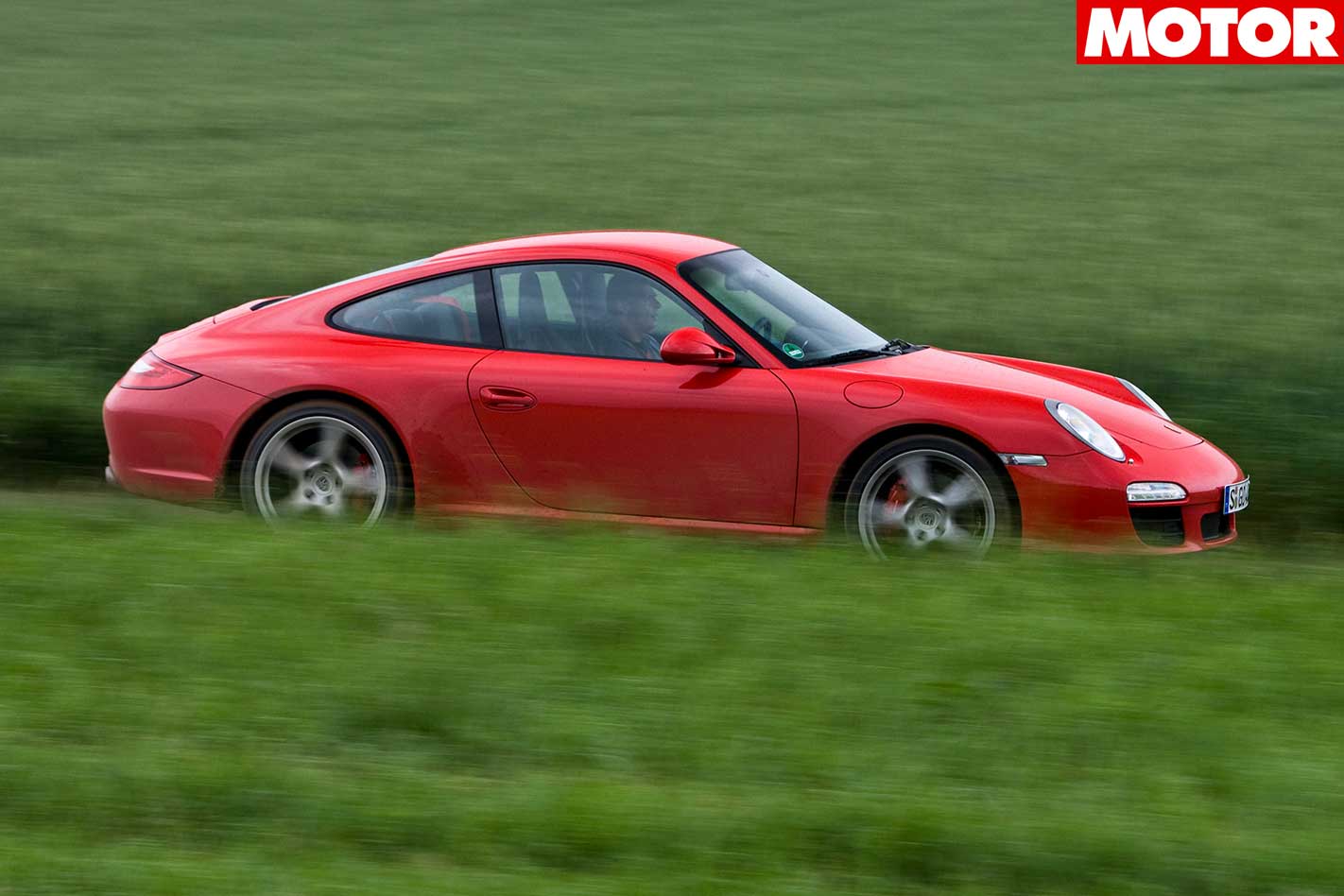
The improvement is small, but worthwhile — the Carrera S (on new-design, slightly lighter 19s) absorbs road hits with greater suppleness while nailing bends with unflappable poise and even greater connection.
Our manual coupe’s optional (and bloody brilliant) Porsche Ceramic Composite Brakes (PCCB), denoted by their yellow calipers, carry-over their 350mm sizing and six-piston front, four-piston rear calipers from last year’s S, but the base Carrera scores an all-new brake system — 330mm drilled and vented front discs (up from 318) with stronger, stiffer four-piston calipers, and same-size drilled and vented rear discs.
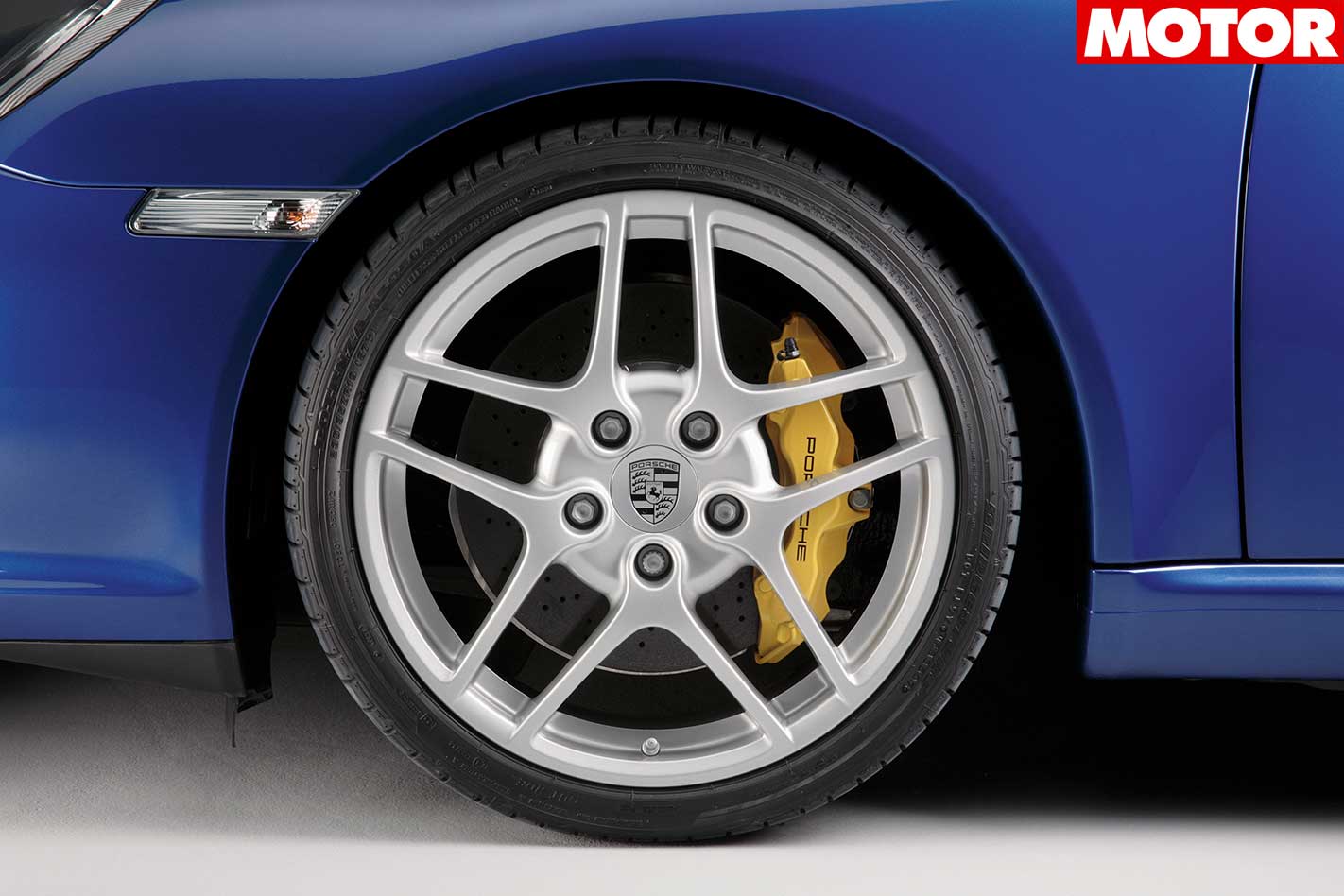
The steed is a 911 Carrera S PDK cabriolet featuring the optional Sports Chrono Package Plus. This incorporates a ‘launch control’ for the seven-speed PDK transmission, as well as an additional Sport button on the dash (Sport Plus) that cuts overall reaction and shift times to less than half of what they were in the Tiptronic S, and the new Carrera S coupe’s 0-100km/h time to just 4.3sec (4.5 without Sport Plus, or 4.7sec with the regular six-speed manual).
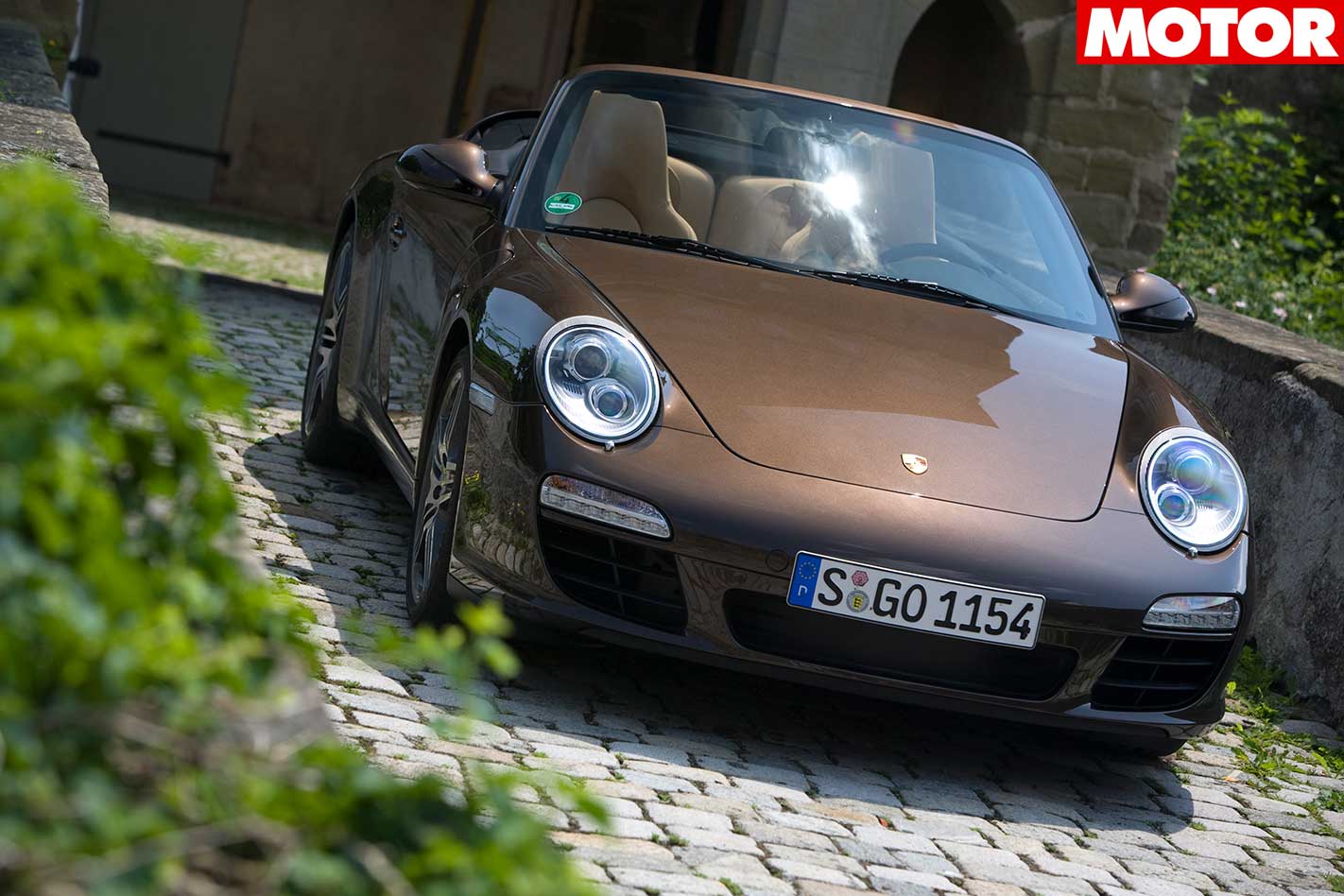
Indeed, in Drive, all settings in default, the only way you can tell the PDK has changed gear is by the alteration in engine note.
No vibes through the pedals, no twinkle through the 911’s terrific new steering wheel. It’s simply flawless. Unlike some of the VW/Audi DSG offerings, Porsche’s PDK doesn’t roll back on hills and never hesitates or clunks shifts. It’s arguably the easiest, most user-friendly two-pedal car in existence, yet there’s wickedness lurking just a simple movement away.
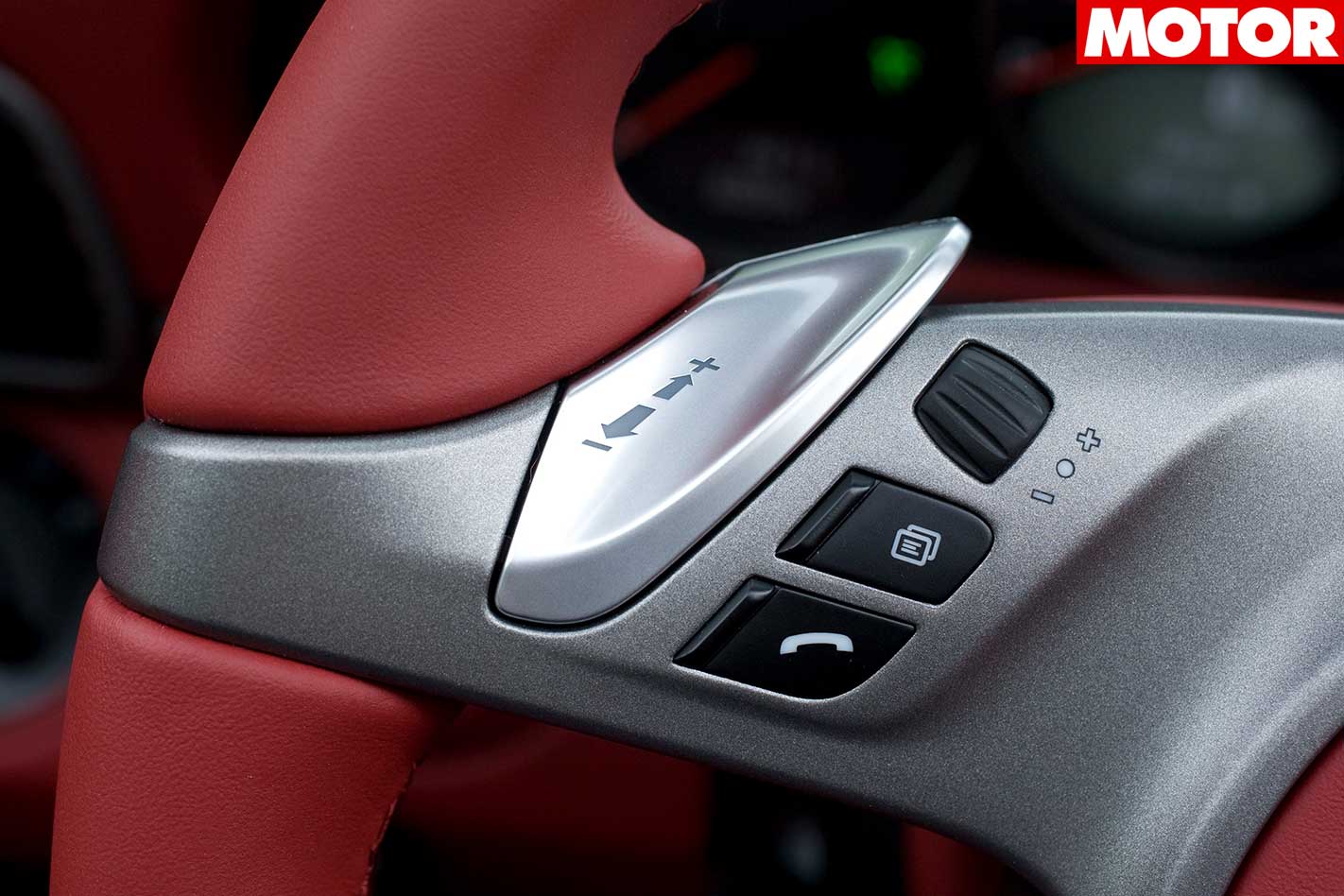
Hit ‘sport’ and the transmission mapping becomes more alert, but never stupidly over-eager. In any mode, mashing the throttle sends PDK down as many ratios as it can go in one deliciously seamless, throttle blipped action, but ‘Sport’ is so intuitive that even when you do that, it somehow settles again quicker than any two-pedal car I can think of. And there’s still ‘Sport Plus’ to go.
Select ‘Sports Plus’ at standstill and the words ‘Launch Control Active’ are highlighted in the centre dial’s digital screen. Then all you need to do is left-foot brake and quickly nail the throttle.
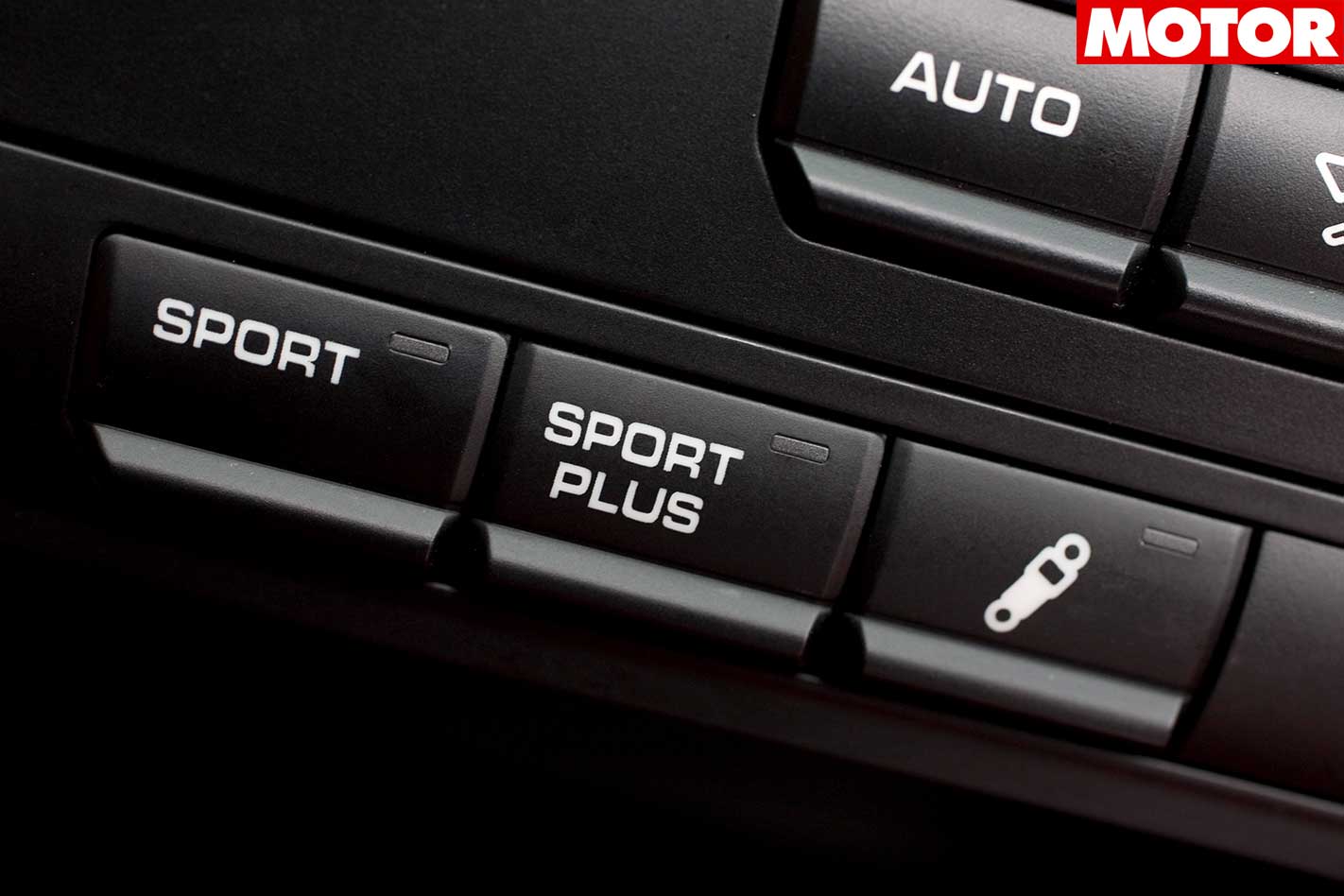
Relax again and you notice how calm PDK is when effortlessly swapping between seventh and sixth at a fast cruise over hilly terrain. At 100km/h, top gear in the old Tiptronic S saw it ticking over at 2450rpm, but PDK’s highest drops that to just 1750. No wonder the new double-clutch ’box has been so helpful in achieving such impressive reductions in carbon-dioxide emissions and fuel consumption.
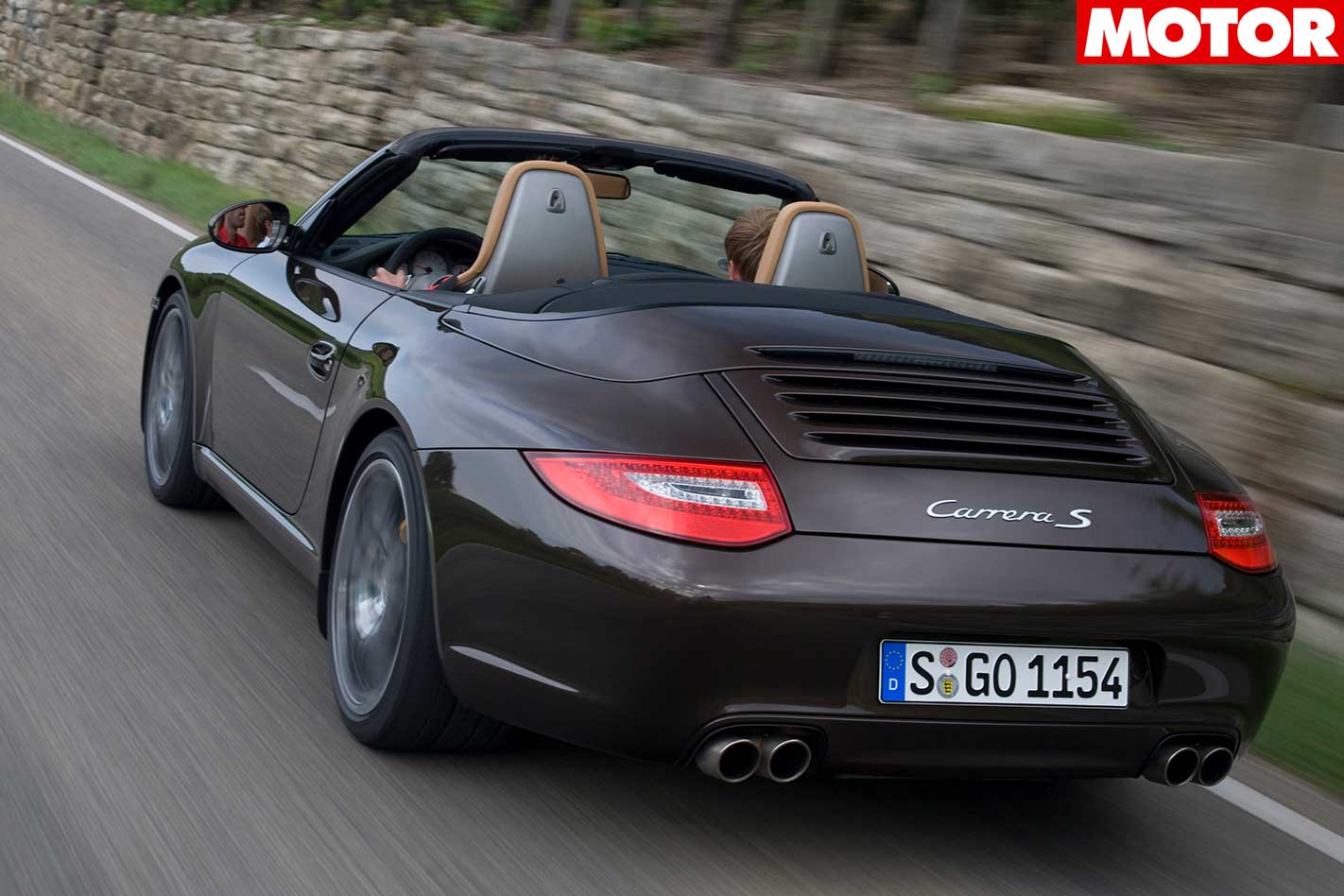
The superb new steering wheel’s round centre boss wheel isn’t as fat and ugly as last year’s effort, and the slightly thicker, re-shaped rim feels just about perfect.
The main dash architecture remains the same, but the centre console’s more tactile switchgear is all new, and its colour screen is now touch-activated.

Both our cars had chocolate-leather interiors, just like a modern lounge, and that includes not only the seats, but the dash, wheel, doors, carpets, everything.
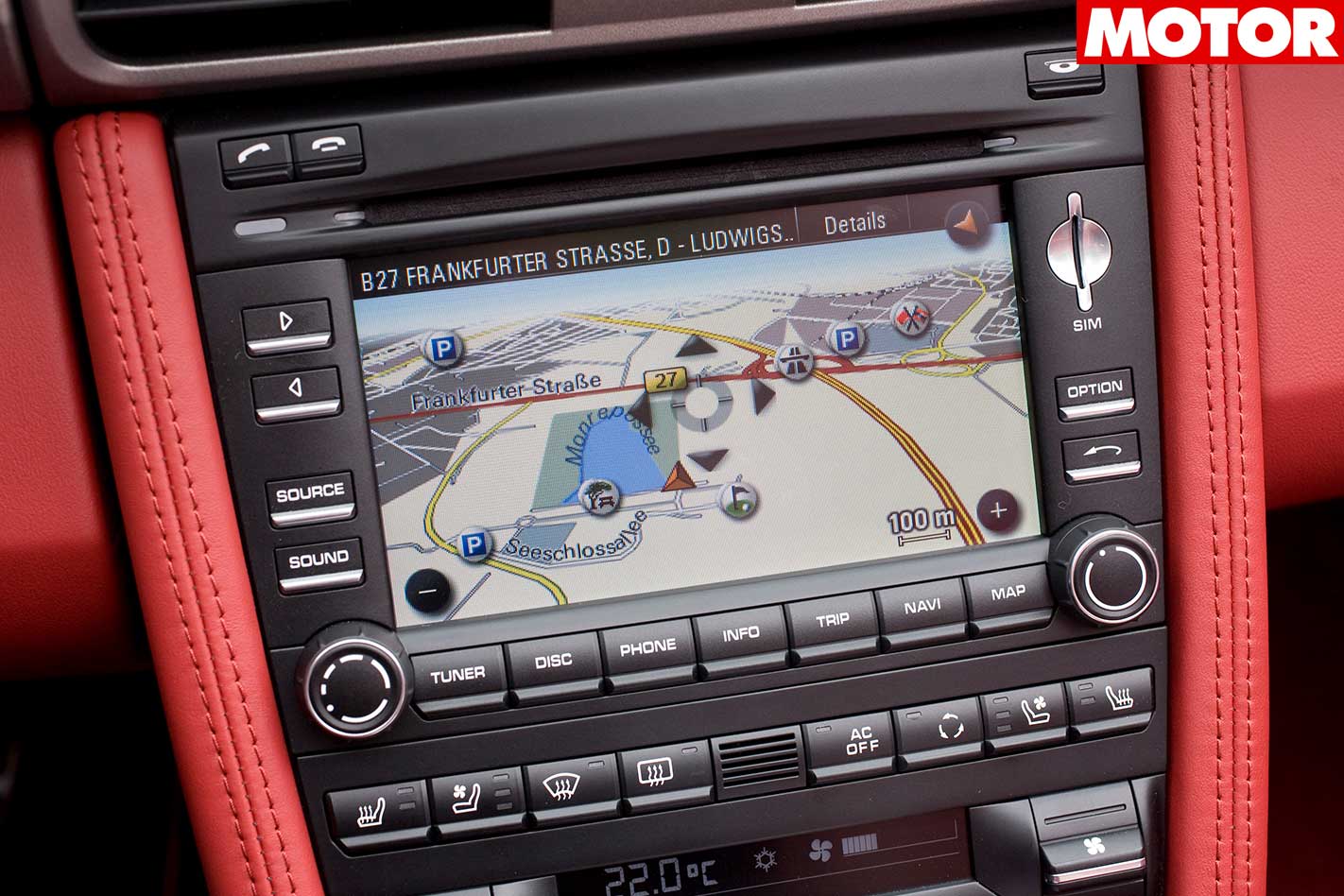
No, the 2008 911 won’t be cheaper, making it even less attainable than it ever was, but what an achievement. More ability and more character. More style and more choice. The Carrera S is so close to perfection that it’s hard to imagine how it could ever be better, but it will be.
Porsche confirmed on the launch that the next-generation 911 will be “faster again”, which is great news for us, if sobering news for its rivals. Poor old BMW. If it does decide to build a new-generation M1, what a challenge.
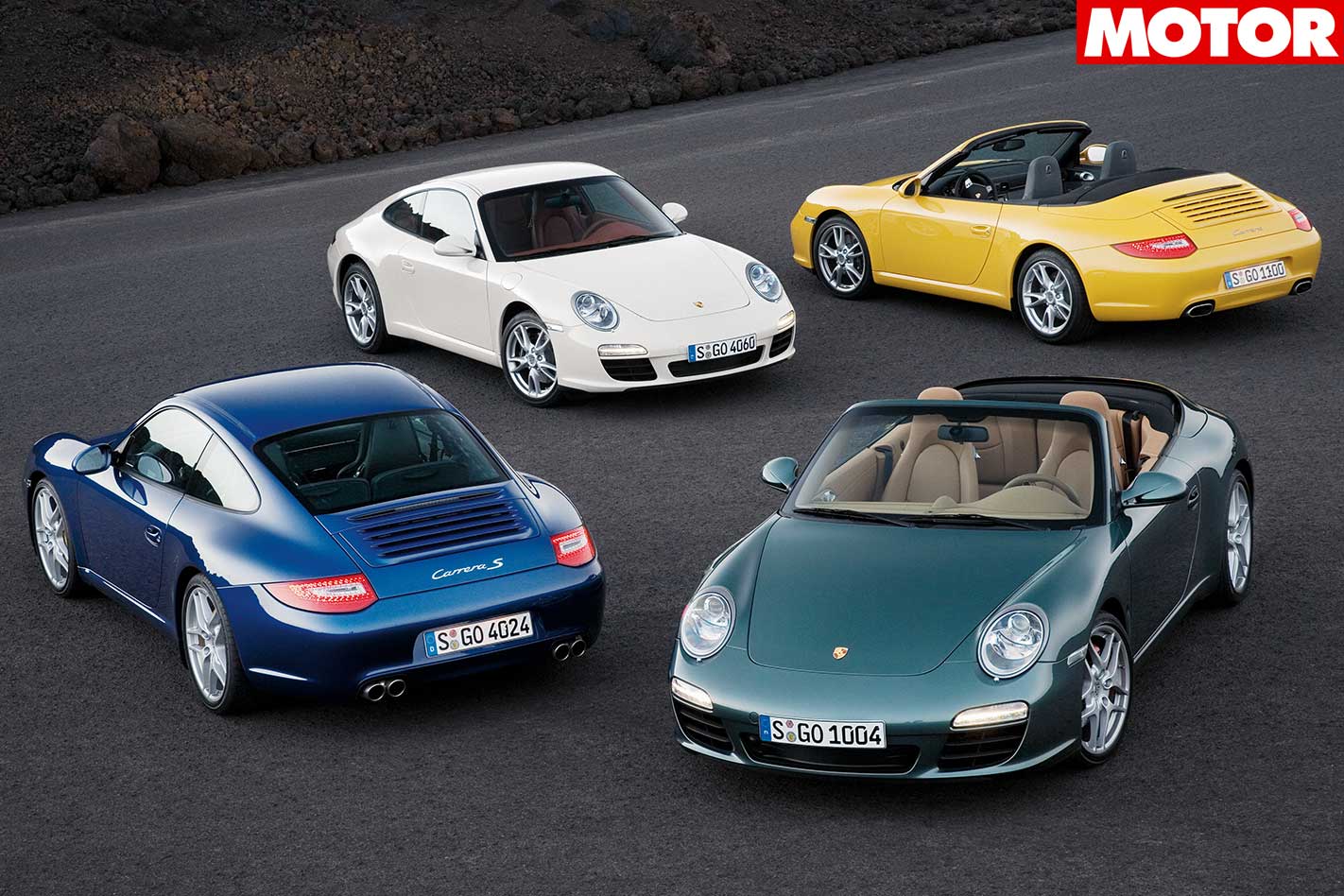
Have Cake, Eat Too
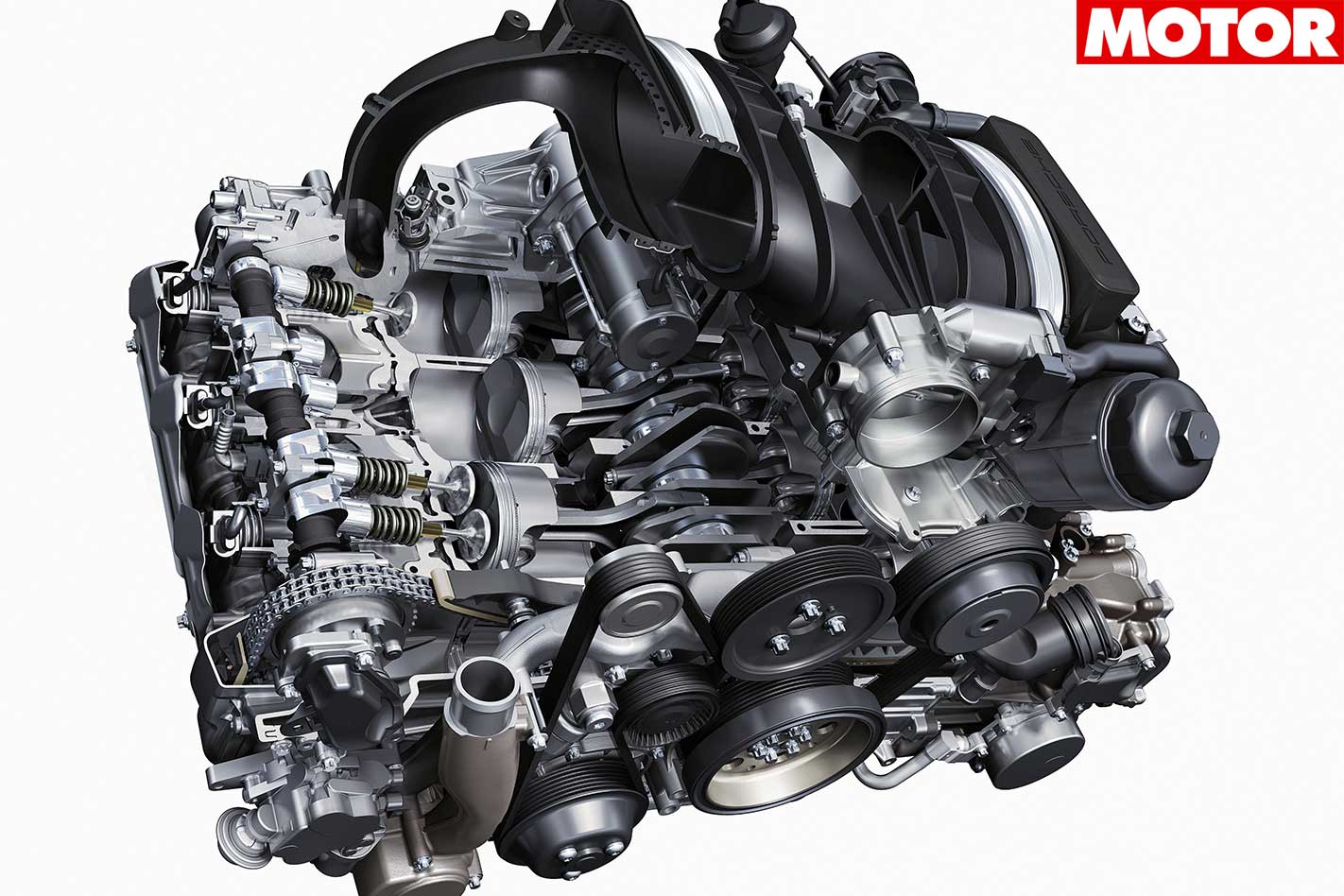
Measured from mid-crank height, they’re 20mm lower from the top and 10mm lower from the bottom, which lowers the centre of gravity. They weigh 6kg less, despite the use of stainless-steel for all components that carry fuel (so they can run on all types of petrol), yet the power units are 22% more rigid.
The oil circuit follows the principles of dry-sump lubrication, but employs an electronically-controlled pressure oil pump that operates on demand – thereby reducing weight and simplifying construction compared to a traditonal full dry-sump design. But the proof’s in the numbers.
The manual Carrera S is 9km/h faster, 0.1sec quicker to 100, 8% more economical and produces 10% less CO2. But the PDK is 15km/h faster than the old auto (at 300km/h), 0.8sec faster to 100 (or 1.0sec with Sports Chrono Plus), 13% thriftier (at 10.2L/100km) and 15% cleaner (at 240g/km). Indeed, the 3.6 PDK does 4.7 to 100, yet sips 9.8L/100km – less than a bloody Camry!
7-Speed PDK
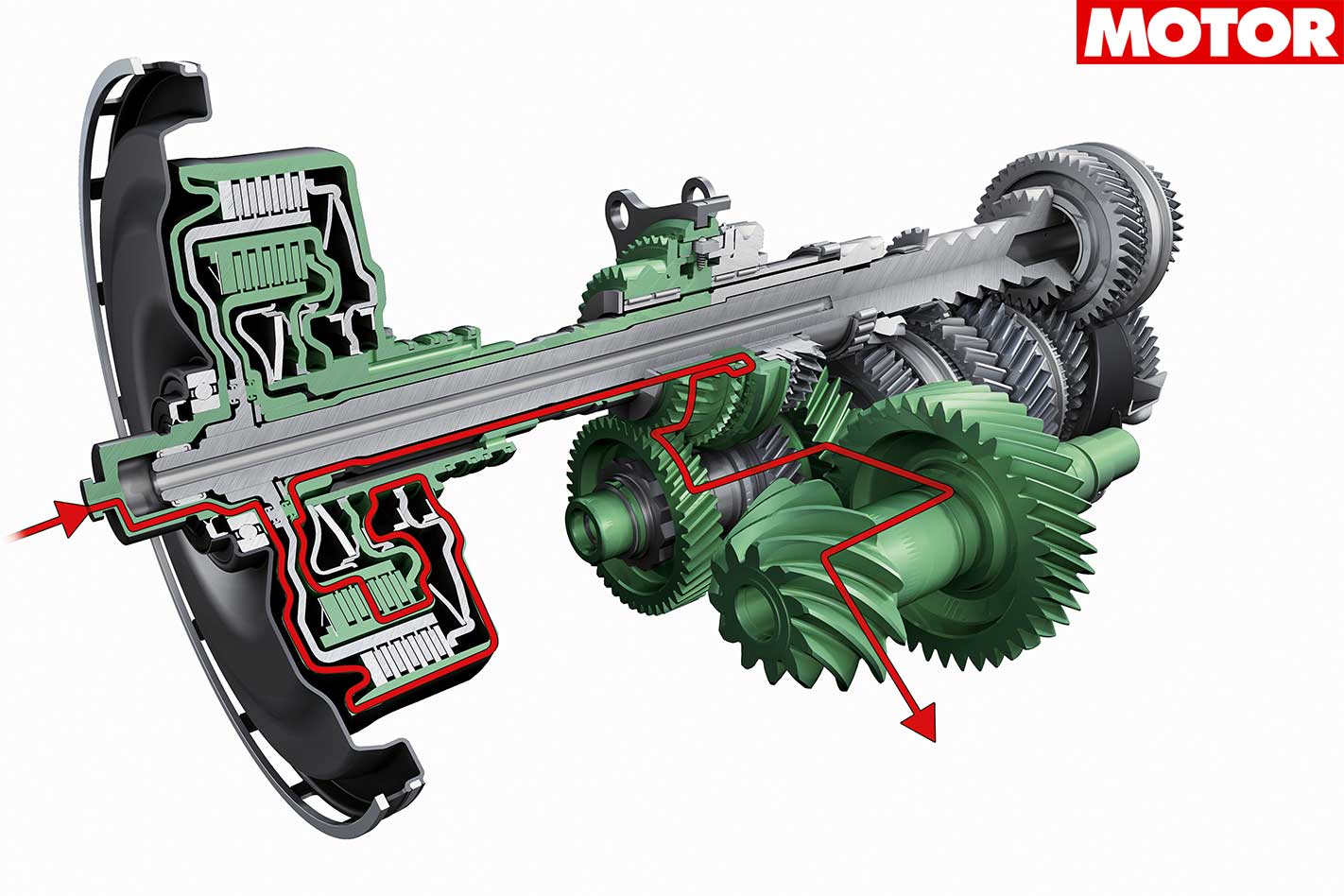
But, more importantly, it’s up to a second quicker to 100km/h (4.3 v 5.3 for an S with Sports Chrono Plus) and is now the ’box du jour for serious track addicts. It’s only rated to 440Nm, though, so don’t expect one in the Turbo any time soon.
Double-clutch Pioneers
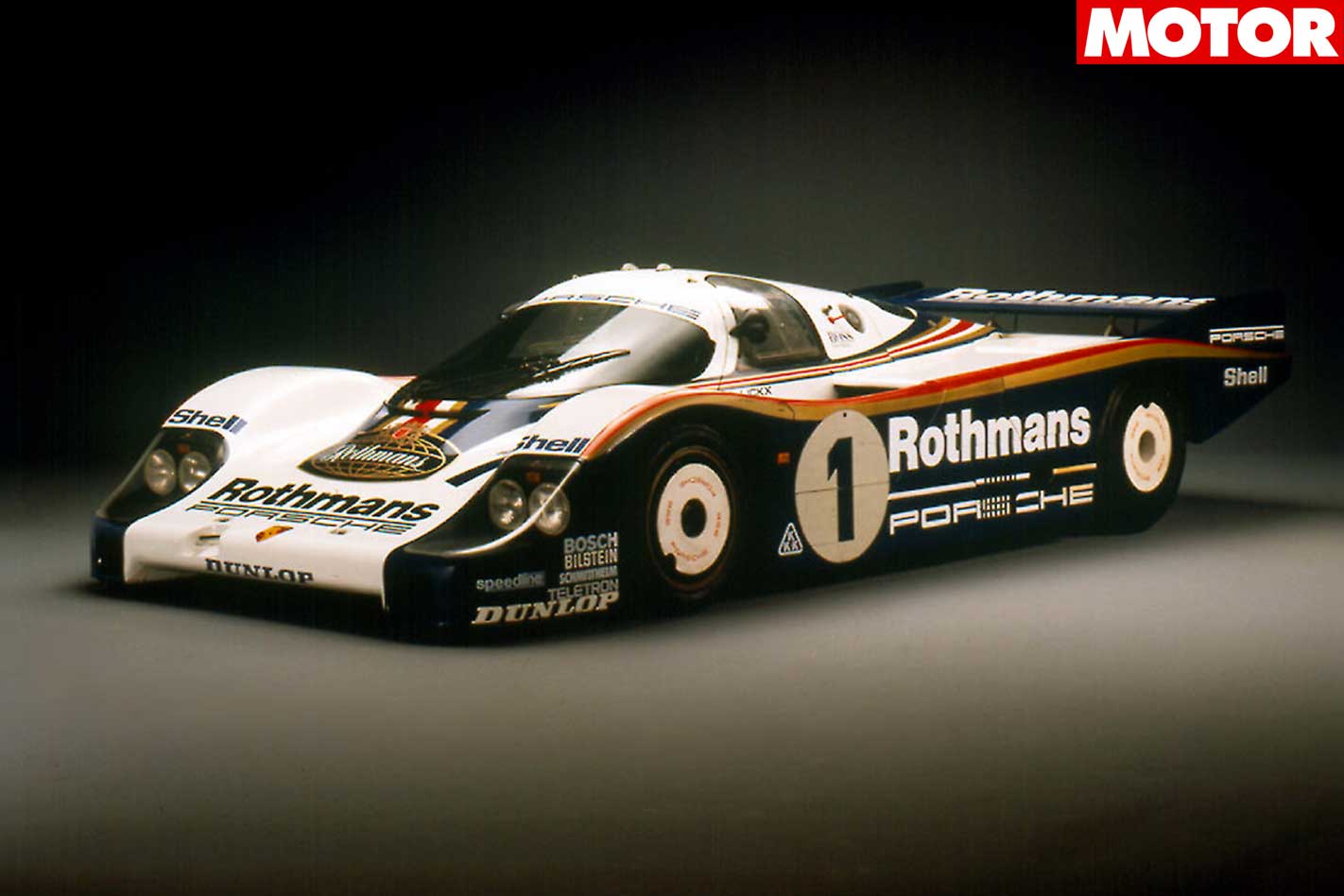
Fast Facts
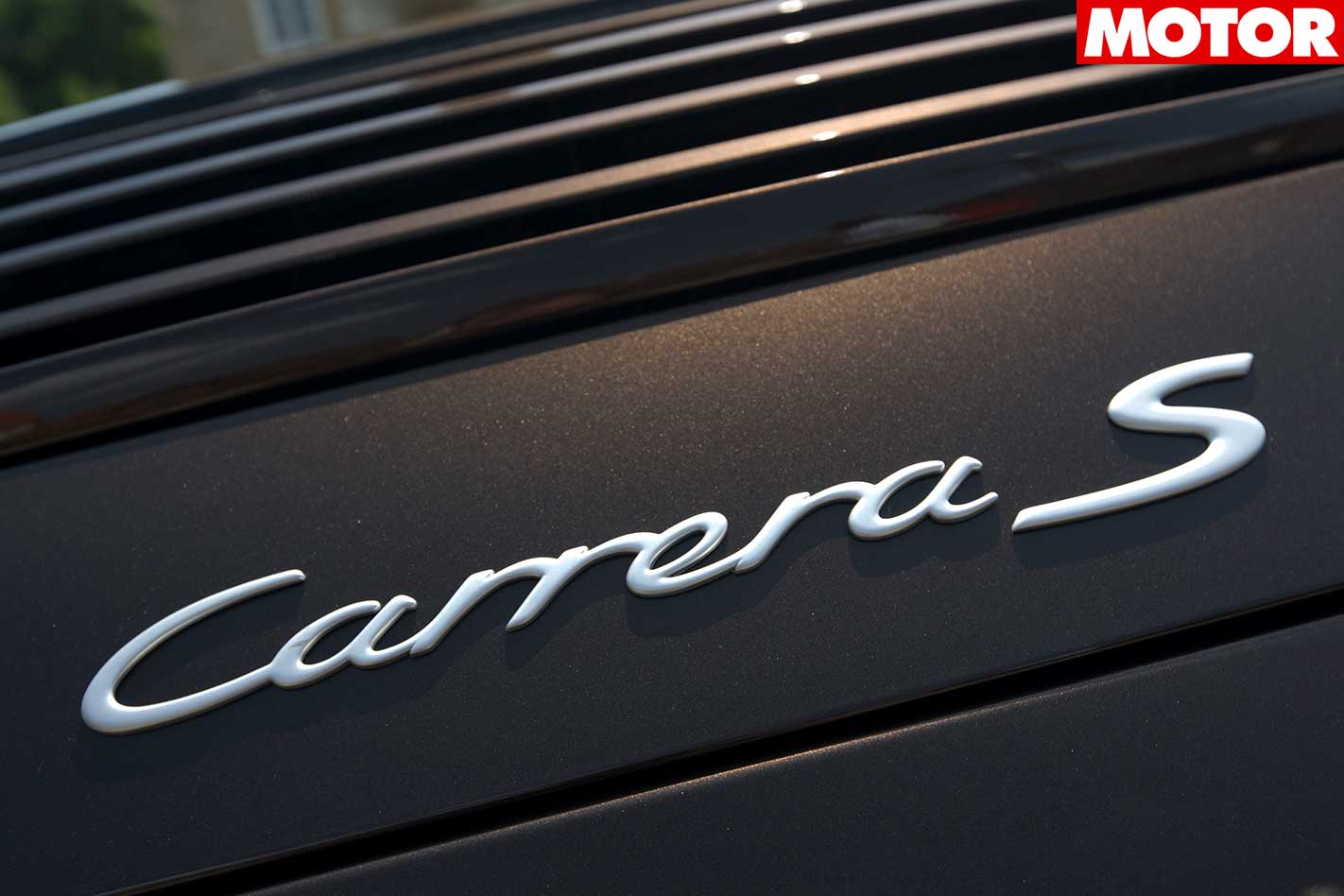
Fast Times 0-100km/h: 4.5sec (4.7)* 0-160km/h: 9.6sec (9.9)* 0-200km/h: 14.8sec (15.2)* 0-1000m: 22.7sec (22.9)* Top speed: 300km/h (302)* * Manufacturer’s claims PDK (manual)
Likes: Everything you could want in a sports coupe – even economy! Dislikes: Shame it’s such an extravagent purchase for most of us

